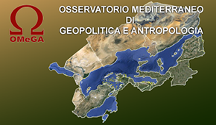di Mohamed Tawfic Ahmed
Suez Canal University, Egypt
29.09.2022
Egypt’s coastal line extends for more than 3200 km, where the total length of the Mediterranean coast is about 1550 km and the length of the Red Sea coast is about 1705 km. The coastal area of the Mediterranean encompasses a unique diversity of ecosystems and natural habitats that include salt marches, coastal lagoons, sand dunes, and beaches. The Mediterranean has also been an inspiratory for many arts that cherished throughout history.
The presence of such remarkable diversity is currently threatened by population and economic growth, climate change and other factors. The ministry of environment has been highly active in taking necessary measures to maintain and preserve the integrity of the Mediterranean environment, fostering several laws and regulations, introducing a comprehensive integrated coastal management program in 1994. The program includes analysis of the current situation and setting priorities and drawing a roadmap form measuring the implementation of sound policies and strategies meant to maintain the environmental integrity of the sea.
The national strategy for the integrated coastal management program is based on three main axes:
-Strengthening the integrated coastal management policy.
-The sustainable planning for coastal resources uses.
-Raising and promoting awareness among stakeholders.
In addition, the ministry of environment has introduced “The Environment Information and monitoring program (EIMP) that aims to establish national environment monitoring program for coastal waters.
The purpose of the program is to obtain baseline information of the quality of coastal water within Egypt territory and to set the scene for a regular survey of these wasters. Residue levels of major pollutants are monitored regularly in major sites of the coast, along with other parameters such as acidity, chlorophyll concentration, dissolved oxygen and other parameters. The program’s special emphases were:
-Identifying major industrial pollutants, their source along the coastal area
-Pollution from sewage discharge
-Outlet from river Nile and major lakes.
Egypt Participation in International Mediterranean Initiatives
Egypt has also been an active member in some of the international accords that had the integrity of the Mediterranean its focus. Shared Environment Information System “SEIS”, an EU sponsored project has been one of these major areas that include several European Mediterranean countries, along with some other non-European countries including Egypt. The initiative was made to simplify the collection, exchange, and use of the data and information required for the design and implementation of environment policy for the benefit of the policy making process.
Egypt has also been one of the contributing countries in the EU – UNEP joint initiative “Regional Survey on Abandoned, Lost or Discarded Fishing Gear and Ghost Nets (ALDFG) in the Mediterranean Sea”. The study meant to provide insight on the issue of ALDFG in the Mediterranean sea, with regards to their occurrence, amounts, types and trends as these are perceived mainly by fishermen and/or other fisheries related stakeholder groups, such as crew members of vessels (ranging from small to big vessels, professional or pleasure craft, etc.), port authorities, professional divers, etc. Furthermore, the study aimed to take stock of existing measures including regulations, cleanup operations, etc. to mitigate the impacts of ALDFG on the Mediterranean.
Mohamed Tawfic Ahmed
